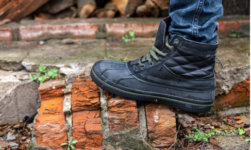
When you encounter water damage in your home or business, the situation can become overwhelming.
Whether caused by a leaky pipe, heavy rainfall, or a major flood, water damage can disrupt your life and cause long-term issues like mold growth and structural problems.
So, it is important to assess the severity accurately so you can take immediate action.
If you are in New Jersey and facing such a situation, you will need water damage restoration services in NJ that are reliable, efficient and provide thorough assessments.
Here, we will dive into more about how to properly assess water damage, what to look for, and how these services can help retore your property to its original state.
Step 1: Understand the Sources of Water Damage
The first step in assessing the severity of water damage is understanding the source of the water. Was it caused by a leaking pipe, a roof leak, or perhaps flooding from a natural disaster? Knowing the source is crucial because different types of water damage require different treatment and restoration methods.
For instance, water from a clean source, such as a broken pipe, is generally less harmful than water from a flood or sewage backup. This will also affect the restoration process. The type of water, as well as the duration of exposure, are both factors that need to be considered when determining the extent of damage.
Step 2: Inspect the Affected Areas
Once you have identified the water source, the next step is to inspect the affected areas. Check for visible signs of water damage, such as:
- Staining or discoloration on walls, ceilings, or floors
- Warped or swollen materials, like wood floors or drywall
- Wet spots that have not dried after a few hours
- Damp or musty odors that indicate potential mold growth
In areas like basements, crawlspaces, and attics, water damage might be harder to detect, so pay close attention to areas where moisture is often trapped. These spaces often experience significant damage but may not show obvious signs on the surface.
Step 3: Evaluate the Extent of Moisture
Measuring moisture levels within the affected areas is key to determining the severity of the damage. Using a moisture meter, professionals can assess the level of saturation in materials like wood, drywall, or insulation. If the moisture readings are high, it suggests that the materials have absorbed a significant amount of water and may need to be replaced or treated.
Moisture readings are also important for determining whether mold is likely to grow. High moisture levels combined with stagnant conditions provide the perfect environment for mold to thrive. If this is the case, remediation steps need to be taken immediately to prevent further contamination.
Step 4: Assess the Duration of the Exposure
The longer the water sits in your home or business, the more damage it can cause. If water has been sitting for an extended period, it may have already started to compromise the structure of your property. This is especially important in areas where wood, insulation, and drywall are present, as they are particularly susceptible to water damage over time.
For instance, wooden structures can warp, weaken, or rot with prolonged exposure to water. Similarly, drywall can become soft and break apart, leading to further structural issues. It is crucial to act quickly to remove the water and prevent the long-term impact on the integrity of your property.
Step 5: Determine the Safety Risks
Water damage is not only a structural concern but also a health hazard. As moisture accumulates, it can create an environment conducive to the growth of bacteria, mold, and mildew. This can lead to health problems like respiratory issues, allergic reactions, and other illnesses. When assessing water damage, always consider the safety risks associated with mold contamination and bacterial growth.
Mold, in particular, can start to grow within 24 to 48 hours of exposure to moisture, so it’s essential to act quickly. A professional service can help mitigate these risks by cleaning and disinfecting the affected areas, removing any contaminated materials, and ensuring that the environment is safe for you and your family.
Step 6: Call in the Professionals
Accurately assessing the severity of water damage is a complicated process that requires expertise and specialized tools. While you can perform a basic inspection yourself, it’s highly recommended to call in professionals, especially if the damage is widespread or involves hidden areas like walls and ceilings. Certified water damages restoration experts can:
- Use advanced moisture detection equipment to identify hidden pockets of water
- Safely remove water and extract damaged materials
- Dry and dehumidify the space to prevent further damage
- Inspect and test for mold contamination
Hiring professionals ensures that the water damages is dealt with promptly and thoroughly, protecting your property from long-term issues.
Conclusion
Accurately assessing water damage is crucial for preventing further harm to your property and health. By understanding the source, inspecting affected areas, measuring moisture levels, and evaluating risks, you can make informed decisions. For comprehensive water damage restoration, it’s best to rely on professional services to ensure thorough cleanup, mold prevention, and structural integrity restoration.






